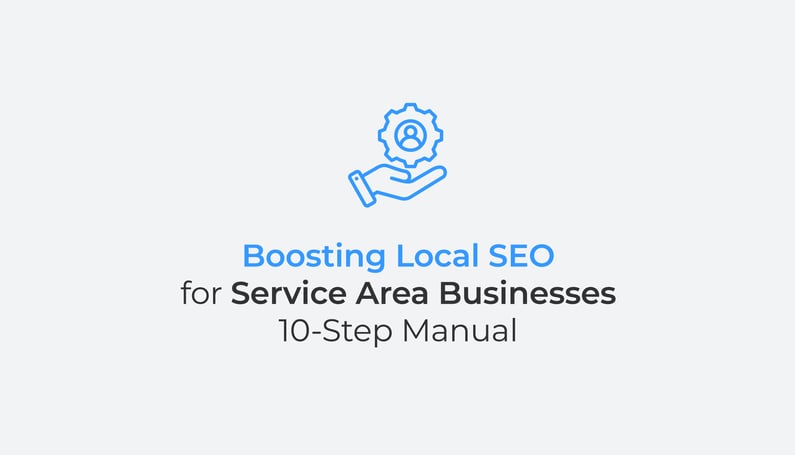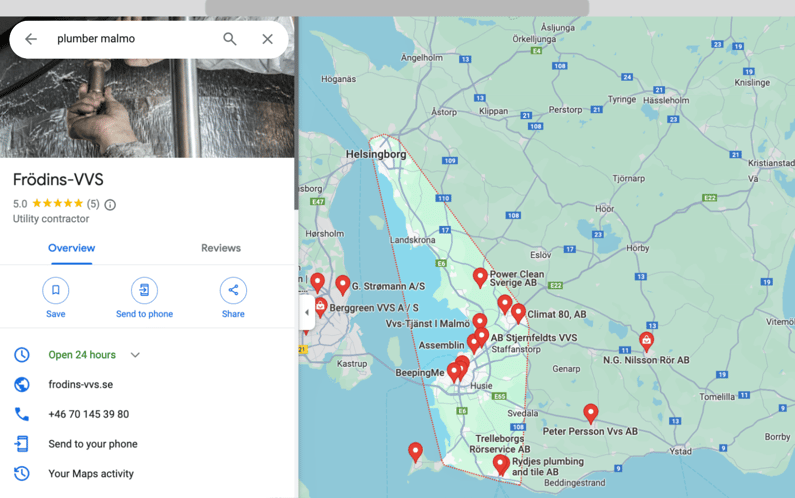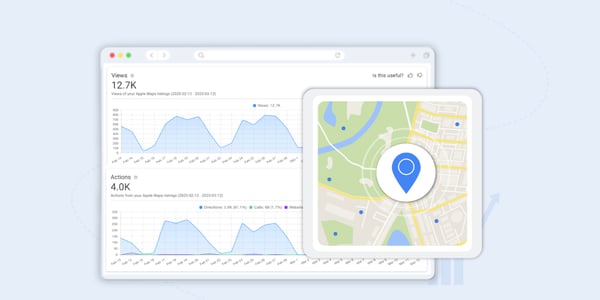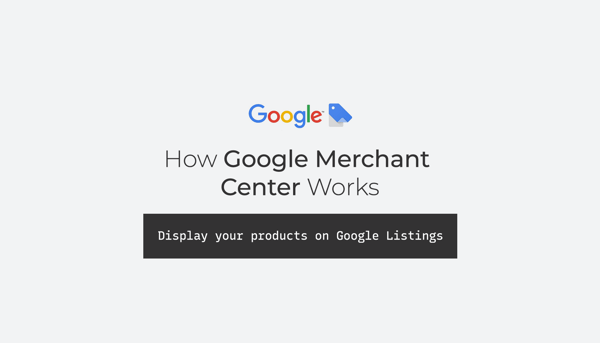Unlike traditional businesses with a fixed storefront, SABs cater to customers across various areas without a central physical location and face unique local visibility challenges. How do you ensure that your business stands out in the local searches of each area you serve?
Although setting service areas is not an official ranking factor, recent observations show that their impact on local visibility is significant.
This manual provides practical, actionable steps to master Local SEO tailored for the unique needs of SABs.

What Qualifies as SAB?
Here’s how Google defines a Service Area Business:
“A business that visits or delivers to customers directly, but doesn’t serve customers at their business address. For example, businesses like cleaning services or plumbers. Service-area businesses can only create one profile for the metropolitan area that they serve.”
In addition to SABs, there are also Hybrid Businesses (HB) that both serve customers at their physical location and visit or deliver to customers directly. While the focus of this article is primarily on SABs, the strategies and insights can also be valuable for HBs, especially in how they manage their online presence and Local SEO for the service areas they cover outside of their physical location.
Enhancing Local SEO for Service Area Businesses in 10 Steps
Step 1: Put Emphasis on Local Keywords
Local SEO starts with the right keywords. It’s not just about tagging your services with a location, but also about understanding the local dialect, needs, and search behaviours.
To uncover area-specific search trends, use tools like SEMrush or Google's Keyword Planner. For example, if you're a plumber, "emergency plumbing services in Malmo" might be a potential keyword to target.
Step 2: Do On-Page Optimisations
On-page SEO needs to reflect the multi-area reach of your business. Ensure that your service pages are individually optimised for each area you serve.
Customise meta titles and descriptions for each area's page, incorporating relevant local keywords. Make sure headings (H1, H2, etc.) on these pages also reflect local keywords and topics. Use images that resonate with each service area, including alt tags with local keywords.
Step 3: Maintain Consistent Local Listings & Citations
Think of listings as your online storefront. Ensure your business category is accurate, your name and phone number are the same across all platforms, and your description emphasises your services for each area.
Regular audits of your listings on platforms like Google Business Profile, Apple Business Connect and Bing are essential to maintain accuracy and relevance. Discover more listing optimisation tactics in our Complete Google Business Profile Guide.

Service Area Guidelines for Google Business Profiles
- No Physical Address for Customer Service: If your business does not serve customers at its physical address, avoid entering any address in the "business location" field in your Business Profile Manager. Leave this field blank.
- Defining Your Service Area: Clearly specify your service area. This can be done using city names, postal codes, or other geographical identifiers.
- Limit on Service Areas: You can specify up to 20 different service areas for your business.
- Geographical Boundaries: Ensure that the outer boundaries of your service area are within approximately 2 hours' driving time from where your business is based. This helps maintain a practical and focused service range.
Step 4: Create Area-Specific Content
Develop content that speaks directly to each service area. For each service area, design landing pages that speak directly to the local audience. Include elements like local landmarks, events, or specific service adaptations for that area.
Create content that addresses the unique needs and interests of each community. This could include local testimonials, case studies, or details about local team members.
Step 5: Leverage Your Reviews
Encourage and respond to reviews from different service areas. Tailor your responses to address local-specific concerns or praises.
Reviews boost your SEO as well as demonstrate your commitment to each community you serve when monitored and responded diligently.
Step 6: Localise Your Interaction on Social Media
Use social media to engage with local communities. Tailor your content to reflect local events, news, or issues and publish it across your local social media pages, Google Posts, etc. This not only increases local engagement but also strengthens your Local SEO efforts.
Step 7: Build Links Through Local Community Engagement
Engage with local communities beyond digital. Sponsor local events, collaborate with regional influencers, or participate in community projects. These activities can lead to organic, high-quality backlinks and enhance your local presence.
Step 8: Optimise for Voice Search
With the rise of voice search, ensure your content answers common local queries in a conversational tone. This includes local slang or terminologies unique to each service area. As an example, phrases like “Where can I find a quick car repair service near me?” should lead to your services.
Step 9: Streamline with Local SEO Automations
SABs encounter distinct challenges in managing their online presence across multiple areas. Local SEO automation tools like PinMeTo streamline this process, ensuring accurate business information is consistently presented across search engines, social media, and online directories.
This enables SABs to enhance their visibility and discoverability in all their service areas, reducing the need for extensive, error-prone manual efforts.
Step 10: Measure Success via Localised Analytics
Track metrics not just globally but also for each service area. Make sure you can segment data by region to understand what's working where.
Common Local SEO Mistakes to Avoid for SABs
1. Keyword Misuse in Titles and Descriptions:
Avoid stuffing titles and meta descriptions with local keywords. Also, don’t add geo-targeting keywords (e.g. city you operate in) in your listing titles. This is against Google’s Naming Guidelines and can lead to penalties.2. Neglecting Local Landing Pages:
Create unique landing pages for each service area with specific local content, rather than just swapping location names on a generic page.3. Overlooking Structured Data Markup:
Use structured data markup to help search engines understand and showcase your content more effectively in local search results.4. Ignoring Mobile Optimisation:
Ensure your website is optimised for mobile users, considering the high volume of local searches on mobile devices.5. Local User Experience Oversight:
Balance technical SEO with a focus on local user experience. Your site should be search engine friendly, but also engaging and relevant to the local audience.To Sum Up
Local SEO for service area businesses is a continuous process, adapting to the evolving needs of different communities. Avoid the common Local SEO mistakes and stay updated with local trends and feedback, adjusting your strategies for maximum relevance and impact.
Looking for ways to level up your local visibility?
Give us an overview about your business below and we'll prepare a free local visibility audit
Lily Adamyan, November 23


